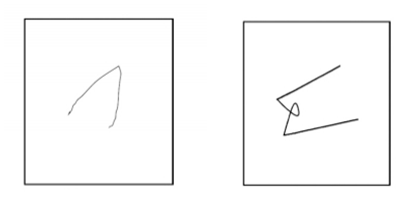So, you think you are really creative and can rock any brainstorming session like no one else!
But how creative are you? Can creativity be measured and evaluated? This blog post offers some answers and 3 ways to test your creativity.
As creativity’s role is becoming more and more essential in people’s life both at home, in school and at work, scientists are increasingly paying attention. In fact, the “science of creativity” has developed into a popular field of research.
1. Torrance Tests of Creative Thinking (TTCT)
The truth is that even though the interest has grown exponentially recently, research on the topic is not new. In fact, as early as the 1940s, E. Paul Torrance, nicknamed “the father of creativity”, began researching creativity in order to improve American education. The problem is that, as any good scientist, Torrance first needed to be able to quantify, measure and analyze creativity.
That’s how he came up in the 60’s with the set of tests named Torrance Tests of Creative Thinking (or TTCT) where Torrance claims to be able to measure what he calls “divergent thinking“: the characteristic of coming up with more answers, or more original answers, rather than deriving a single best answer.
One of the most iconic elements of the TTCT was the Incomplete Figure test; the drawing equivalent of exquisite corpse. Here are 2 examples of incomplete drawings :
followed by 2 drawings inspired by them
 (image credits and for more drawings: http://www.thedailybeast.com/newsweek/galleries/2010/07/10/creativity-test.html#slide1)
(image credits and for more drawings: http://www.thedailybeast.com/newsweek/galleries/2010/07/10/creativity-test.html#slide1)
Give it a try: download the template here (or this one, and this one) and let your creativity do the drawing.
2. Remote Associates Tests (RAT)
Remote Associates Tests are my favorite because they are more like puzzles instead of open-ended tests which are difficult to gauge. The concept is simple: you are given 3 seemingly unrelated words, such as “falling , actor , dust”, and you are asked to come up with a fourth word that connects all 3 words. In this example, the answer is “star” for “falling star”, “movie star (actor)” and “stardust”.
Finding the 4th word is not always easy especially when trying a methodical approach or brute force. The answer often comes as a flash of insight (almost out of nowhere). Relaxing your mind, and letting it wander, instead of applying the typical “think! think! think!” approach works much better. Supposedly being sleepy and drunk helps too.
Give it a try: here’s my personal favorite web page to test your RAT skills: http://www.remote-associates-test.com/. It’s addictive, so use responsibly.
3. Alternative Uses Task
Developed by J.P. Guilford in 1967, the Alternative Uses Task tests evaluate creativity by having you think of as many possible uses for a common house hold item (such as a brick, paperclip, or newspaper)
Example: name all the uses for a brick:
- A paperweight
- A doorstop
- A mock coffin at a Barbie funeral
- To throw through a window
- To use as a weapon
- To hit my sister on the head with
The test also measures divergent thinking and scoring is comprised of 4 components:
- Originality – how common is the use (vs. other people’s responses). For brick: “doorstop” (common) vs. ” A mock coffin at a Barbie funeral” (disturbingly original?)
- Fluency – total number of uses found
- Flexibility – or different categories. In this case there are five different categories (weapon and hit sister are from the same general idea of weapon)
- Elaboration – amount of detail (e.g. “a doorstop” vs. “a door stop to prevent a door slamming shut in a strong wind”
Give it a try: look around for a common house object, say a vase, how many uses can you think of for that vase.
For many more interesting tests, check out this fantastic resource page.
This post was partly inspired by this Studio 360 podcast.

